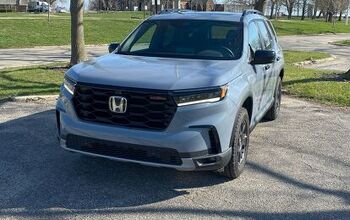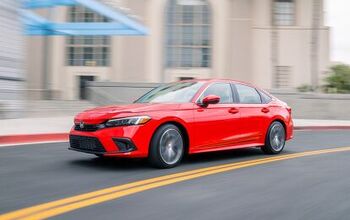NHTSA Scraps Automatic Window Reverse Rule
From the front lines of the safety wars comes Bloomberg‘s report that NHTSA has dropped a proposed rule requiring automatic reverse systems on obstructed windows. Auto safety advocate group Kids and Cars had pushed for the systems to be put on all power windows, at a cost of $6-$8 per window. But Mr Safety himself, Ray LaHood isn’t convinced, telling Senator Jay Rockefeller in a letter
There is considerable uncertainty about benefits estimates, particularly with respect to preventing or mitigating the less serious, mostly minor, injuries involving a power window closing on a person’s finger or hand
Automakers had opposed the rule, which would have covered only “one touch” power windows, on the grounds of costs and “unintended consequences with regard to security.” Kids and Cars cites [ PDF] a 2007 NHTSA estimate that 2,000 emergency visits each year are caused by power window injuries. NHTSA said in 2009 that the proposed rule would save two lives and help prevent 850 injuries a year. The safety dilemma marches on…
[Hat Tip: John Horner]
More by Edward Niedermeyer
































Comments
Join the conversation
While I think it would be ridiculous to require this "safety feature" on all cars, a guy at work would have benefited from having power windows like this. He was leaning through the window of his truck, when his dog stepped on the power window switch and rolled the window up, trapping his head in the truck cab, and his hands and arms outside. The doors were locked, and he had no way to roll the window back down or open the door and access the window switch (I'm fairly certain, that you wouldn't be able to reach the switch around an open door while trapped in the window, anyway). Luckily for him, his wife was in the house and was able to come out and rescue him.
My dad's '00 Camry has a nice feature where you push down on the button to open, and stick your finger under it and pull up to close. Extremely intuitive and very hard (as in, impossible) to close unintentionally. Whatever happened to that idea? Don't solve the symptom, solve the problem.
I'd like to know which car out there has one-touch-close (a window that goes up, a liftgate that comes down, sunroof that slides shut, etc) where this feature is not built in. I'm under the impression all major automakers already put something that detects when resistance load shoots way up and reverses or halts the door/gate. As a side note, if you ever get trapped in the trunk of an S-Class, you can be happy to know that there is a large, back-lit button you can push that automatically opens the trunk door. Those glowing levers in cheaper cars are so lame compared to the Mercedes' button.
Auto down is already required on windows which have a one-touch close feature. The proposed rule would have required it on all power windows.
One concern raised is whether this might make it easier for thieves or other "evil-doers" to access your vehicle.